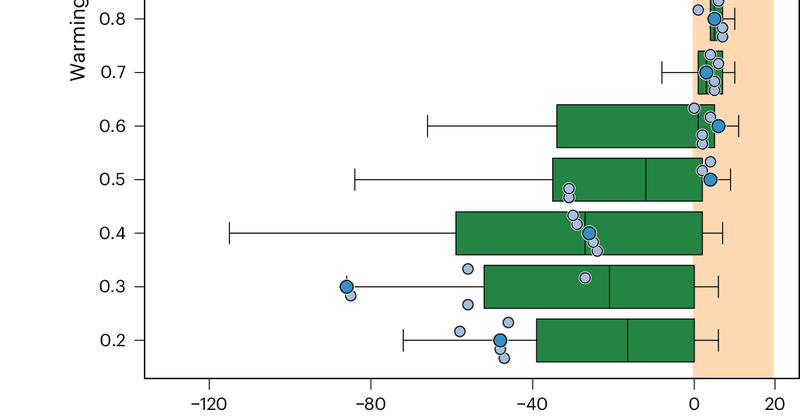
Emanuele Bevacqua
@Bevacqua_E
Followers
1K
Following
1K
Media
103
Statuses
541
Physicist • Climate scientist and Group Leader @ufz_de • Studying (compound) weather/climate extreme events • #ClimateViz • 🎨 • ❄️ • he/him
Leipzig, Germany
Joined April 2018
In @NatureClimate, we show that a year above 1.5 °C signals that Earth is most probably within the 20-year period that will reach the Paris Agreement limit.
nature.com
Nature Climate Change - What a first year with temperature 1.5 °C above the pre-industrial baseline implies for long-term temperature goals is unclear. Here the authors show that such a...
3
16
38
The results of both papers depend on how CMIP6 models capture all relevant climate processes over the next decade or so. See Discussion and Work @UFZ_de together with @CarlSchleussner @ZscheischlerJak.
Paper 1 by @Bevacqua_E and colleagues asks what a year where average annual global warming is at or above 1.5°C tells us about the timing of reaching or exceeding the Paris Agreement's longer-term limit. The 2024 calendar year was the first such year.
0
0
1
RT @zhangyaonju: Excited to share our last paper of year 2024 published at @NatureComms. We developed a new framework and demonstrated that….
nature.com
Nature Communications - This study finds that vegetation greening is expected to exacerbate compound soil drought-heat extreme events, as enhanced transpiration during the early growing season...
0
3
0
RT @lytarasova: We are looking for a new cohort of PhDs @UFZ_de The #SEESAW will look at the long-lasting #droughts and rapid transitions t….
0
12
0
RT @m_de_Brito: We are hiring 3 PhDs at the UFZ PhD Cohort SEESAW - Societal and environmental impacts of complex extremes in a changing wo….
0
70
0
We are delighted to announce the "Compound weather and climate events" session at #EGU25!. We look forward to receiving your exciting abstracts!. @Compound_Event @anaiscouasnon
0
1
12
RT @cassouman40: Les pluies extrêmes sur #Valence sont associées à une goutte froide qui s'isole vers Gibraltar. Cette dynamique n'est pas….
0
234
0






